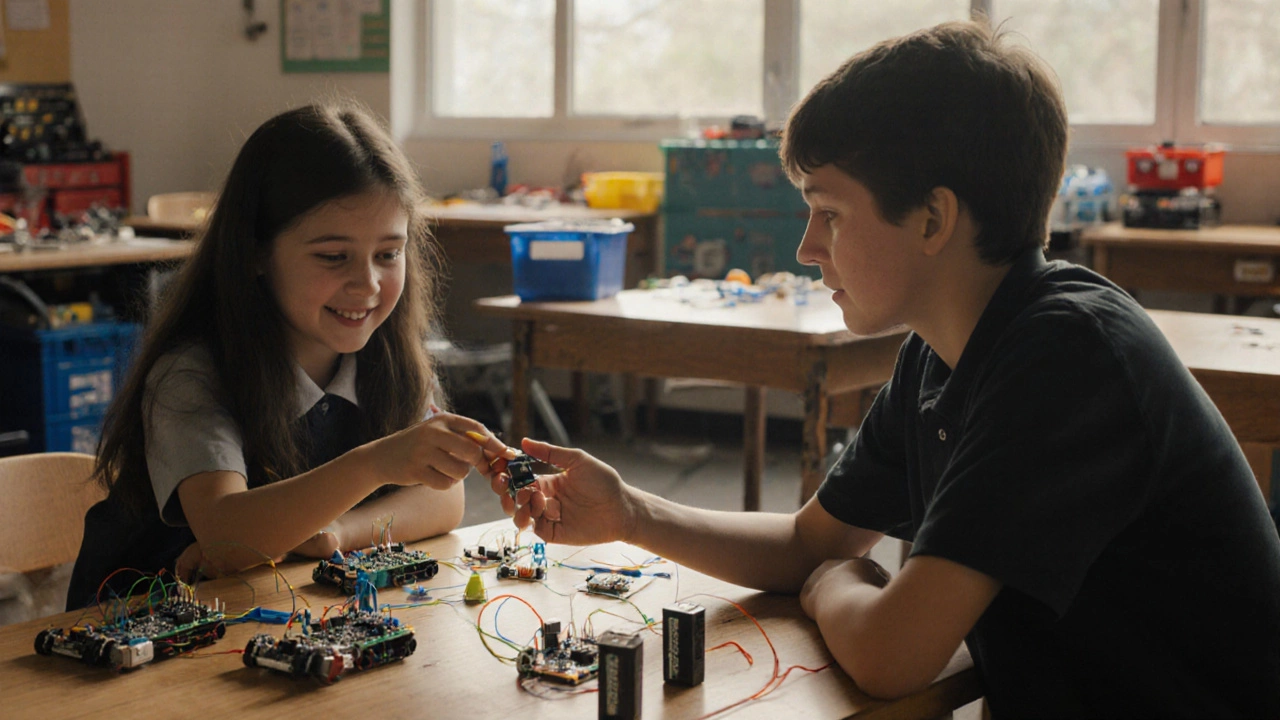After‑School Clubs – Simple Ideas & Tips for Parents
Looking for a way to keep kids busy after the school bell rings? An after‑school club can give them a safe space to learn, play, and make friends. You don’t need a big budget or a fancy venue – just a few ideas and a bit of planning.
Why Join an After‑School Club?
Kids who attend a club often finish homework faster because they have a set routine. They also pick up new skills, from art tricks to basic coding, that they might not see in class. Socially, clubs are a low‑pressure way to meet peers who share the same interests. For parents, it means a reliable slot where kids stay supervised while you finish work or errands.
Research shows that regular participation in extracurriculars lowers stress and improves confidence. When a child sees progress – like mastering a new chess move or baking a healthy snack – that sense of achievement carries over into school work.
Easy Club Ideas to Try Tonight
Snack & Story Club. Grab a bowl of fruit, a few whole‑grain crackers, and a short storybook. Kids enjoy nibbling while listening, and you can rotate themes each week – mystery, adventure, or even a local legend.
Art Explorers. All you need are paper, crayons, and a simple prompt such as “draw your favorite place”. A quick 20‑minute session sparks creativity and gives parents a visual reminder of what their child did.
Mini Science Lab. Mix baking soda and vinegar for a fizzy reaction, or explore magnet experiments with everyday items. Keep safety in mind, but the excitement of a hands‑on demo keeps kids coming back.Fitness Fun. A short, guided stretch or a simple game of tag in the backyard gets energy out and builds healthy habits. No equipment, just a clear space.
Planning a club doesn’t have to be a chore. Start with a list of 3‑4 activities you can rotate weekly. Set a regular day and time – for example, Tuesdays 4‑5 pm – and let the kids know what to expect. Send a quick reminder to parents via text or a group chat so everyone stays in the loop.
Don’t forget the snack. Healthy after‑school bites keep energy steady and prevent meltdowns. Try sliced apples with peanut butter, yogurt parfaits, or the “best after school snacks” ideas from our blog – quick, tasty, and kid‑approved.
When the club runs smoothly, ask kids what they liked best and what they want more of. Their feedback shapes future sessions, making the club feel like their own space.
Ready to launch? Grab a notebook, sketch a simple schedule, and pick the first activity. Within a couple of weeks you’ll see the routine taking shape, and kids will look forward to that special time after school.
Remember, the goal isn’t perfection; it’s offering a consistent, fun place for kids to grow. With a little effort, your after‑school club can become a highlight of the week for the whole family.
What Makes a School Club Successful? Key Factors That Keep Students Coming Back
Successful school clubs aren't about fancy equipment or big budgets-they're about student ownership, small wins, and a sense of belonging. Here's what actually keeps kids coming back.
Read MoreHow to Flirt in a Club: Real Tips for After-School Settings
Learn how to connect with others in after-school clubs through quiet, genuine actions-not forced flirting. Real tips for teens on building trust, reading cues, and staying respectful.
Read MoreHow to Run a Successful School Club: Real-World Tips That Work
Running a successful school club takes more than just showing up after class. This article breaks down practical steps to help you recruit members, keep them interested, handle drama, and actually get things done. Learn what keeps a club running smoothly and what to avoid. You'll get real tips and examples from clubs that actually work. Make your club the one everyone wants to join.
Read MoreMost Popular School Activities: After-School Clubs That Win Big
Curious about the hottest after-school clubs around? This article digs into what makes certain activities so popular with students. Get real examples of trending clubs, why kids flock to them, and clever tips for joining or even starting one. No fluff, just straight-up advice and facts for anyone looking to get more out of their school experience. Stick around for fresh insight into after-school fun.
Read MoreHow to Be Productive After School: Unlock Your Hidden Potential
Struggling to find productive ways to spend your time after school? This article explores how joining after-school clubs can boost both your productivity and your skills. Discover tips to manage your time effectively and find activities that align with your interests while still having fun. Learn to turn those after-school hours into opportunities for personal growth and new friendships.
Read MoreWhat is Wacky Day at School?
Wacky Day at school is a unique event designed to spice up the standard school routine with fun, creative activities. It encourages students to express themselves through unusual outfits, engaging games, and quirky challenges. This day fosters community spirit and offers a break from typical academic pressures. Schools often tie these events to student clubs or causes, encouraging participation and team building. Embracing the chaos and fun, Wacky Day is a much-loved tradition in many schools.
Read MoreChoosing the Right Size for After-School Clubs: What 13-Year-Olds Need
Deciding on the right after-school club size for a 13-year-old can help them stay engaged and find their niche. While some clubs thrive with smaller, intimate groups, others may benefit from larger memberships, offering diverse perspectives. Understanding your child's interests and how they socialize is crucial. Paying attention to the club dynamics and objectives can help you find the best fit for your teen. We'll guide you through, exploring factors to consider in choosing the perfect club size for your young one.
Read MoreAre 10 Extracurriculars Too Much?
Juggling ten extracurricular activities might seem over the top, but how many is really too many? Discover the signs your plate is too full, how to effectively manage your schedule, and tips for balancing enjoyment and obligation. This article provides practical advice on how to navigate the chaotic world of after-school clubs and activities.
Read MoreKickstart Your After-School Club: A Step-by-Step Guide
Starting a successful after-school club can be a rewarding challenge. With the right approach, you can create an environment where students can learn and grow outside of the classroom. From selecting a compelling focus to recruiting dedicated members, each step is crucial for establishing a thriving club. Explore practical tips and insights to ensure your club becomes a staple of the school community. Unleash creativity, camaraderie, and fun in your new after-school adventure!
Read MoreValuable Lessons Rich Kids Learn in After-School Clubs
After-school clubs play a significant role in shaping the lives of children from affluent backgrounds. These programs offer more than just recreational activities; they teach essential life skills, foster creativity, and nurture leadership qualities. By exploring a variety of pursuits, children learn teamwork, responsibility, and cultural awareness. The impact of these clubs extends beyond childhood, equipping kids with tools for future success.
Read More








